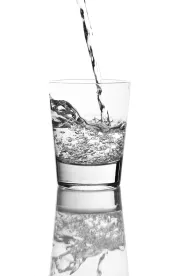MassDEP is one step closer to issuing draft regulations this summer regulating PFAS in drinking water with the June 8, 2018, issuance by its Office of Research and Standards of recommended interim toxicity and drinking water guideline values for PFAS.
PFAS is the class of several thousand man-made perfluorinated alkyl substances. Most of the discussion nationwide on PFAS has focused on two specific compounds: perfluorooctane sulfonate (PFOS) and perfluorooctanoic acid (PFOA). EPA issued Drinking Water Health Advisories for these specific compounds in November 2016, in part because these two compounds have been the most extensively produced and studied of the PFAS class. It is widely anticipated that EPA will issue a drinking water standard for these two compounds this year, as part of the National PFAS Plan to be developed by Fall 2018, as announced by Administrator Scott Pruitt at the May 2018 PFAS Leadership Summit.
MassDEP is taking a different approach. The June 2018 recommended drinking water guidance values would address the six PFAS that have been identified in drinking water systems in Massachusetts. MassDEP’s Office of Research and Standards is recommending applying the 70 part per trillion health advisory developed by EPA collectively to five of these compounds: PFOA, PFOS, perfluorohexane sulfonate, perfluorononanoic acid, and perlfuoroheptananoic acid. The Office of Research and Standards has determined that the remaining PFAS, perfluorobutane sulfonate (PFBS), is less toxic and is recommending a 2,000 ppt guidance value.
These guidance values are not regulations or statutes and are not enforceable. However, in its June 11, 2018 MassDEP Fact Sheet on PFAS in Drinking Water: Questions and Answers for Consumers, MassDEP stated that based on these guidance values, all public water suppliers should take steps expeditiously to lower levels of the five PFAS combined to below 70 ppt, if that level is currently exceeded. Further, MassDEP has announced that it intends to develop both a drinking water standard and a site cleanup standard for these six PFAS in 2018.




 />i
/>i

